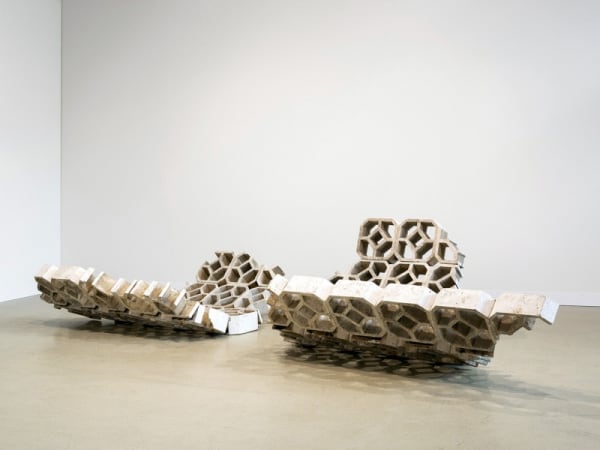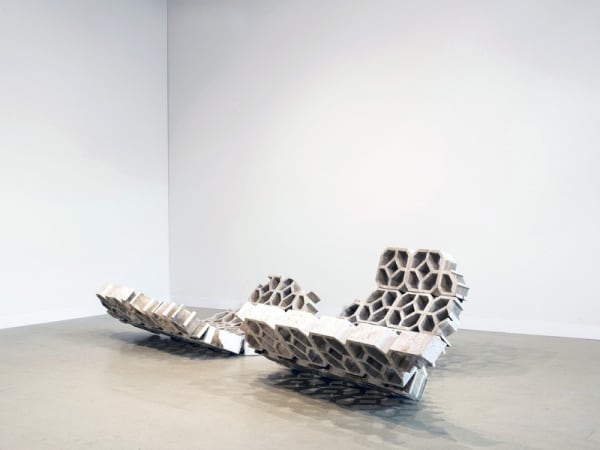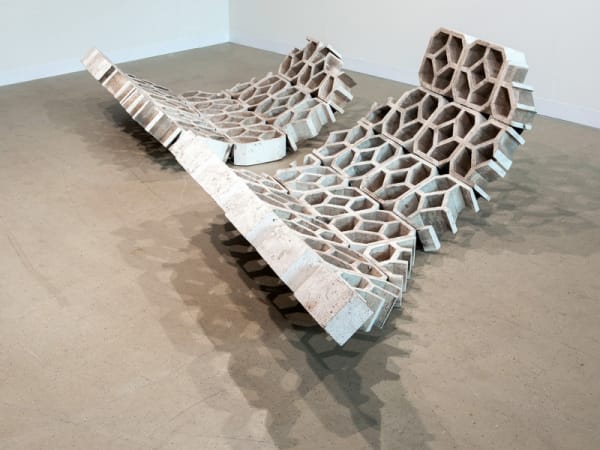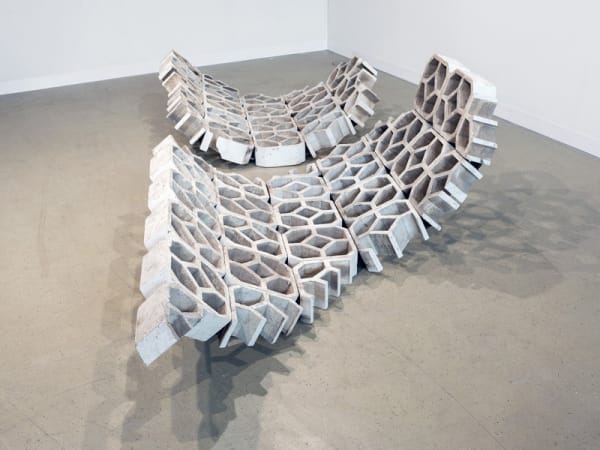
“For the observer, sight confers power; for the observed, visibility is a trap” The Rhetoric of Empire, David Spurr
In the sieged Gaza strip, a tunnel is a structure of survival. But after having become exposed, it morphs into a sign of the colonizer, of the impossibility of movement embedded within the structure itself.
The work Inscribed on Sight is based on an image of a Gazan tunnel being partially exposed. Seeing the tunnel strips
it of its essence of being unseen; that is, the act of seeing becomes an act of destroying. Only the exposed parts
of the tunnel are modeled here as fragments of a body that has rather been ‘excavated,’ like an archaeological artifact, its value being linked to a national identity and image. In isolation, the fragments become a reference to an architectural gesture, to authority. The found fragment reconstructed here is built with a decorative element used regionally in modernist buildings called claustra. The use of it here is a superimposition of movement and dwelling – and the impossibility of the two in this context – revealing the entanglement of material references and politics.
In Saba Innab’s attempts to analyze the fragility of refuge, exile, and the extraterritorial space, the tunnel becomes an archetype of dwelling in the temporary.




